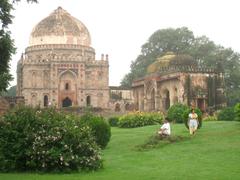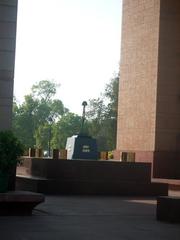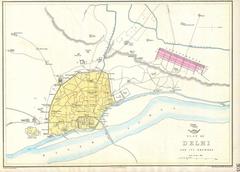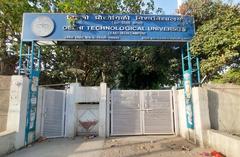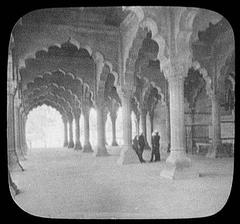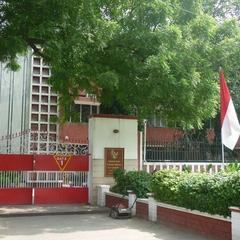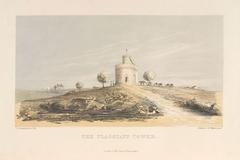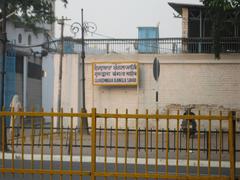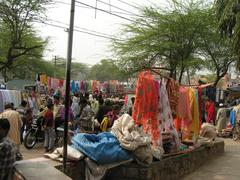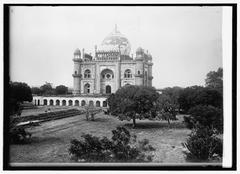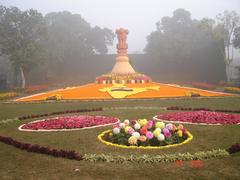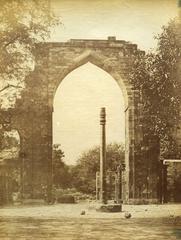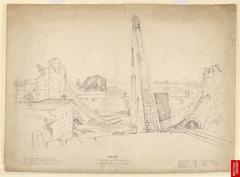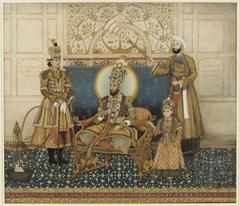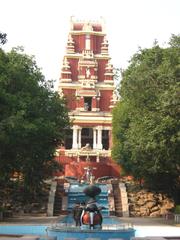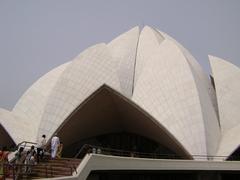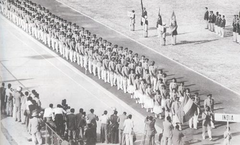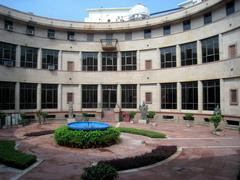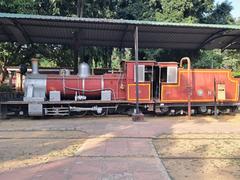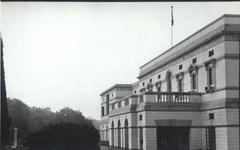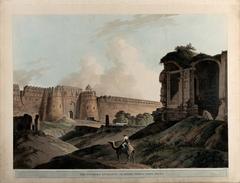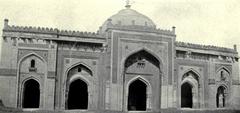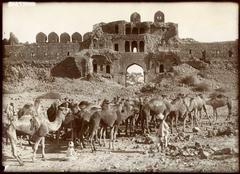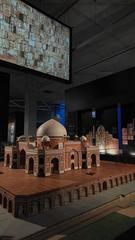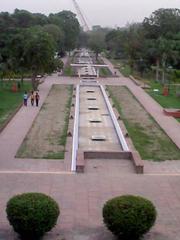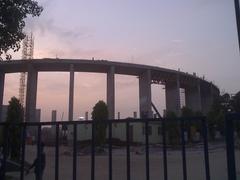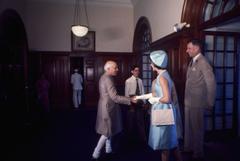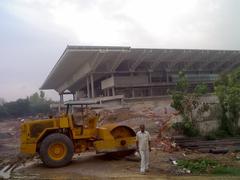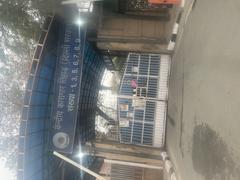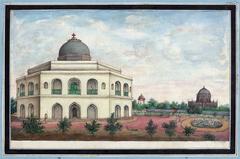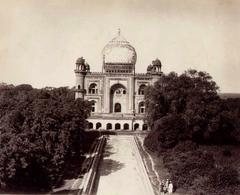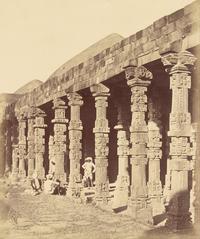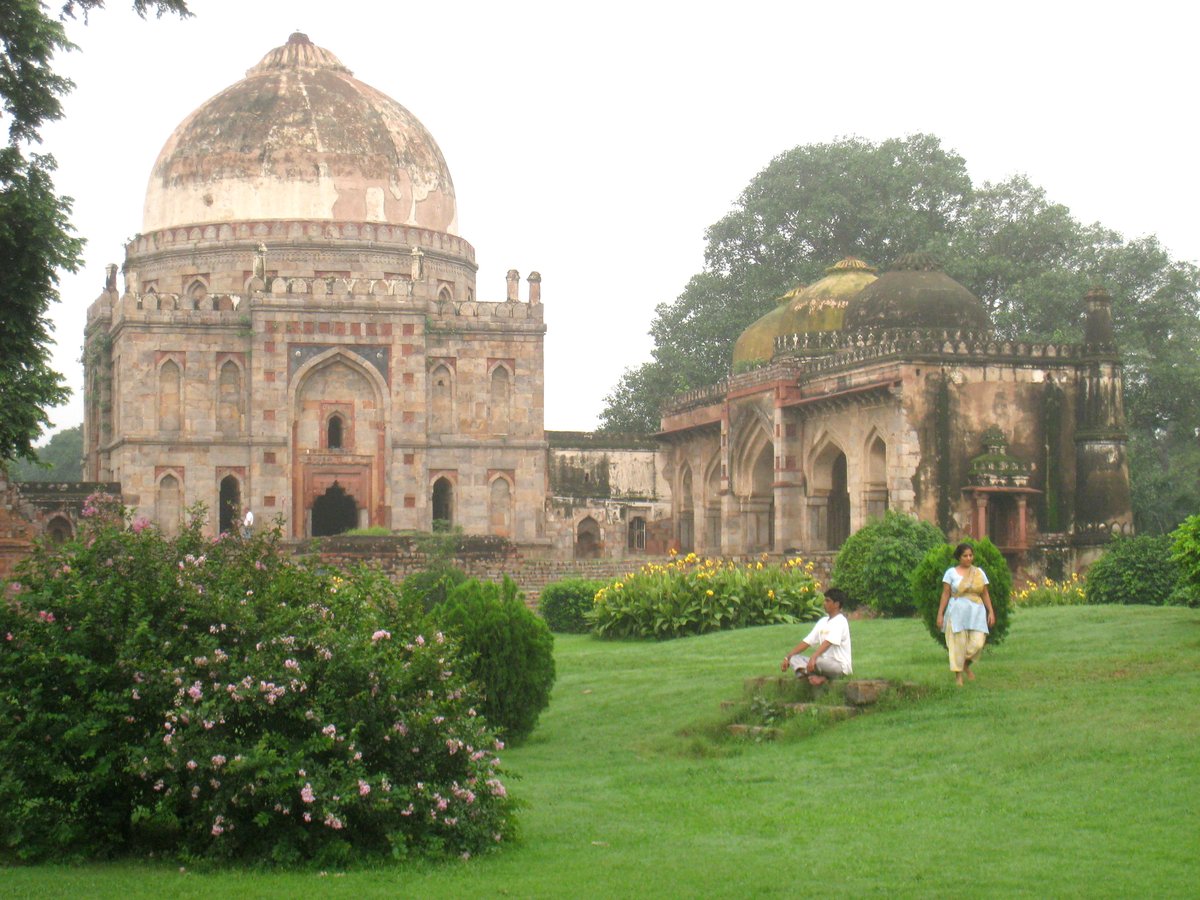
Comprehensive Guide to Visiting Bara Gumbad Tomb and Mosque, New Delhi, India
Date: 17/07/2024
Introduction
Nestled within the serene Lodi Gardens in New Delhi, the Bara Gumbad Tomb and Mosque is a striking representation of Indo-Islamic architecture from the late 15th century. Constructed in 1490 during the reign of Sikandar Lodi, the second ruler of the Lodi Dynasty, this complex encompasses a large domed tomb, a mosque, and a guesthouse. The Bara Gumbad, translating to ‘Big Dome,’ is renowned for its architectural innovation and intricate craftsmanship, making it a significant historical and cultural landmark (Delhi Tourism). The Lodi Dynasty, which governed parts of Northern India from 1451 to 1526, is celebrated for its architectural contributions, and the Bara Gumbad stands as a testament to this legacy. The complex not only reflects the architectural prowess of the era but also provides insights into the socio-religious dynamics of the time, highlighting the importance of religious practices and the tradition of hospitality (Viator, GetYourGuide).
History of Bara Gumbad Tomb and Mosque
Origins and Construction
The complex consists of three main structures: the Bara Gumbad (a large domed tomb), a mosque, and a guesthouse or “mehman khana.” The tomb itself is not believed to house any graves, leading historians to speculate that it may have been constructed as a gateway to the mosque or as a ceremonial hall. The mosque and the guesthouse, however, are functional and exhibit the intricate craftsmanship typical of the Lodi period.
Architectural Features
The Bara Gumbad tomb and mosque complex is a testament to the architectural innovation of the Lodi Dynasty. The tomb is characterized by its massive dome, which is one of the earliest examples of a full dome in Indo-Islamic architecture. The dome is constructed of rubble masonry, covered with plaster, and adorned with intricate stucco work. The exterior of the tomb features a combination of red sandstone and grey quartzite, creating a striking visual contrast.
The mosque, located adjacent to the tomb, is a rectangular structure with five arched openings on the facade. The central arch is larger and more ornate than the others, a common feature in Islamic architecture symbolizing the entrance to a sacred space. The interior of the mosque is equally impressive, with intricately carved mihrabs (prayer niches) and a beautifully decorated qibla wall, which indicates the direction of Mecca.
The guesthouse, or mehman khana, is a smaller structure but no less significant. It is believed to have served as a place for travelers and pilgrims to rest. The guesthouse features a series of arched openings and a flat roof, with decorative elements that mirror those of the mosque and tomb.
Historical Significance
The Bara Gumbad complex holds immense historical significance as it represents the architectural and cultural zenith of the Lodi Dynasty. The Lodi rulers were known for their patronage of the arts and architecture, and the Bara Gumbad is a prime example of their contributions to the cultural heritage of India.
The complex also provides valuable insights into the socio-religious dynamics of the period. The mosque, with its grand design and intricate decorations, underscores the importance of religious practices in the daily lives of the people. The guesthouse, on the other hand, highlights the tradition of hospitality and the importance of providing for travelers and pilgrims.
Preservation and Restoration
Over the centuries, the Bara Gumbad complex has faced the ravages of time and weather. However, efforts have been made to preserve and restore this historical monument. The Archaeological Survey of India (ASI) has undertaken several restoration projects to ensure the structural integrity and aesthetic appeal of the complex.
One of the significant restoration efforts was carried out in the early 20th century, during the British colonial period. The British recognized the historical value of the Lodi Gardens and undertook extensive landscaping and restoration work to preserve the monuments within the gardens, including the Bara Gumbad complex.
In recent years, the ASI has continued to monitor and maintain the site, ensuring that it remains accessible to the public while preserving its historical and architectural integrity. These efforts have included cleaning and repairing the stonework, restoring the stucco decorations, and maintaining the surrounding gardens.
Cultural Impact
The Bara Gumbad complex is not just a historical monument; it is a living testament to the rich cultural heritage of India. The site attracts thousands of visitors each year, including tourists, historians, and architecture enthusiasts. It serves as a reminder of the artistic and architectural achievements of the Lodi Dynasty and their contributions to the cultural fabric of India.
The complex also plays a significant role in the cultural life of New Delhi. The Lodi Gardens, where the Bara Gumbad is located, is a popular recreational spot for locals and tourists alike. The gardens provide a serene and picturesque setting for the monuments, allowing visitors to appreciate the historical structures in a tranquil environment.
Visitor Tips
For those planning to visit the Bara Gumbad complex, here are some useful tips to ensure a memorable experience:
- Timing: The Lodi Gardens are open from sunrise to sunset, and the best time to visit is early morning or late afternoon when the weather is pleasant, and the lighting is ideal for photography.
- Entry Fee: There is no entry fee to visit the Lodi Gardens or the Bara Gumbad complex.
- Guided Tours: Consider hiring a local guide or joining a guided tour to gain deeper insights into the history and architecture of the complex.
- Photography: The Bara Gumbad complex offers excellent opportunities for photography, so don’t forget to bring your camera.
- Respect the Site: As a historical and religious site, it is important to respect the monument and its surroundings. Avoid touching the structures and follow any guidelines provided by the authorities.
Frequently Asked Questions (FAQ)
Q: What are the visiting hours of Bara Gumbad?
A: The Lodi Gardens, including the Bara Gumbad complex, are open from sunrise to sunset.
Q: Is there an entry fee for Bara Gumbad?
A: No, there is no entry fee to visit the Lodi Gardens or the Bara Gumbad complex.
Q: Are guided tours available?
A: Yes, guided tours are available. Consider hiring a local guide or joining a guided tour for a more informative visit.
Q: What is the best time to visit Bara Gumbad?
A: The best time to visit is early morning or late afternoon when the weather is pleasant and the lighting is ideal for photography.
Q: How can I respect the site during my visit?
A: Avoid touching the structures, follow any guidelines provided by the authorities, and respect the site’s historical and religious significance.
Conclusion
By understanding the rich history and significance of the Bara Gumbad tomb and mosque, visitors can fully appreciate the cultural and architectural heritage of this remarkable site. Whether you are a history enthusiast, an architecture lover, or a casual tourist, a visit to the Bara Gumbad complex in the Lodi Gardens is a journey through India’s illustrious past.
Call to Action
Explore more about New Delhi’s historical sites by checking out our related articles. Follow us on social media for updates on new posts and travel tips. Download our mobile app for an enhanced travel experience!
References
- Visiting Bara Gumbad - History, Tickets, and Travel Tips, 2024 Delhi Tourism
- Exploring Bara Gumbad - Visiting Hours, Tickets, and Historical Insights into New Delhi’s Architectural Marvel, 2024, Viator
- Ultimate Guide to Visiting Bara Gumbad Tomb and Mosque - Tips, Tickets, and Timings, 2024, GetYourGuide
